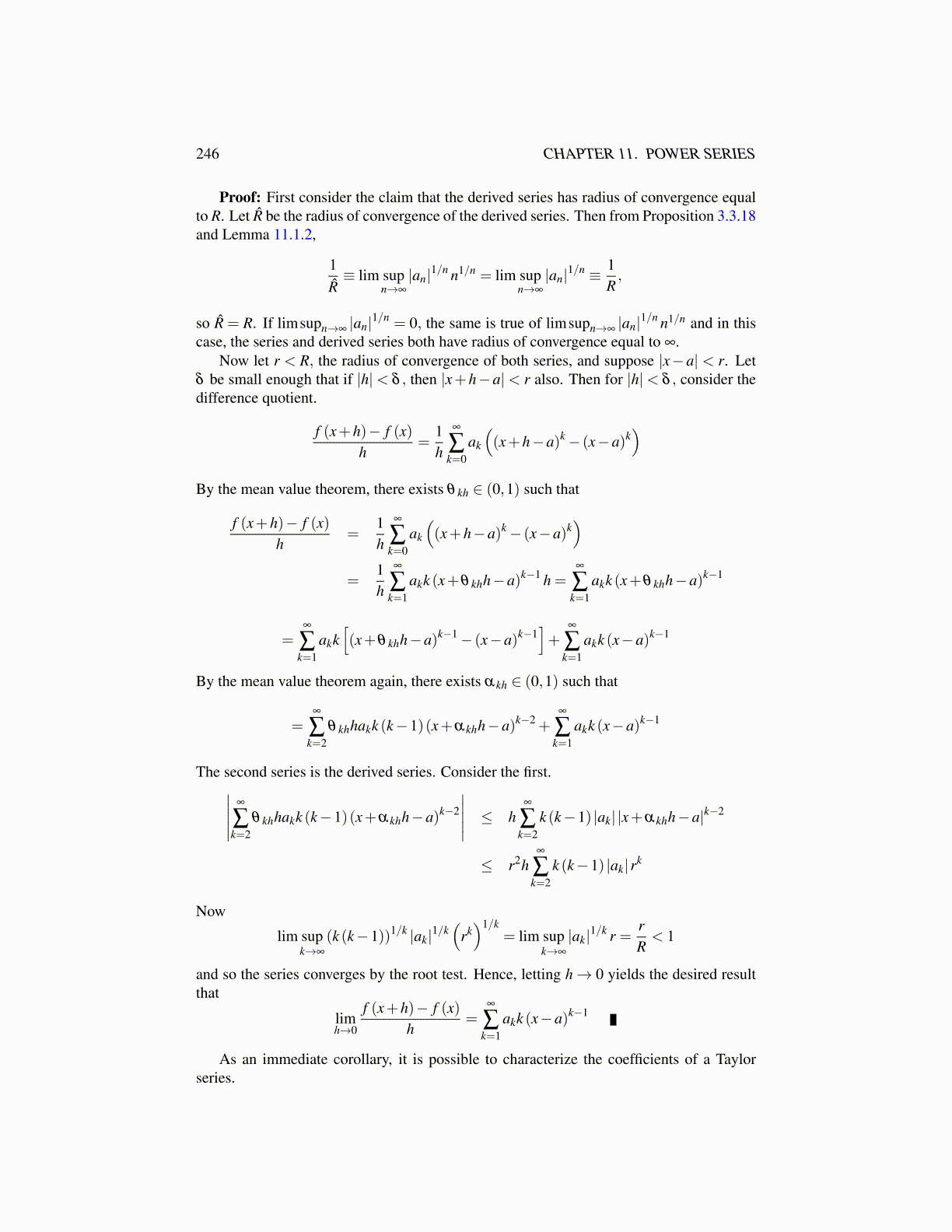
246 CHAPTER 11. POWER SERIES
Proof: First consider the claim that the derived series has radius of convergence equalto R. Let R̂ be the radius of convergence of the derived series. Then from Proposition 3.3.18and Lemma 11.1.2,
1R̂≡ lim sup
n→∞
|an|1/n n1/n = lim supn→∞
|an|1/n ≡ 1R,
so R̂ = R. If limsupn→∞ |an|1/n = 0, the same is true of limsupn→∞ |an|1/n n1/n and in thiscase, the series and derived series both have radius of convergence equal to ∞.
Now let r < R, the radius of convergence of both series, and suppose |x−a| < r. Letδ be small enough that if |h|< δ , then |x+h−a|< r also. Then for |h|< δ , consider thedifference quotient.
f (x+h)− f (x)h
=1h
∞
∑k=0
ak
((x+h−a)k − (x−a)k
)By the mean value theorem, there exists θ kh ∈ (0,1) such that
f (x+h)− f (x)h
=1h
∞
∑k=0
ak
((x+h−a)k − (x−a)k
)=
1h
∞
∑k=1
akk (x+θ khh−a)k−1 h =∞
∑k=1
akk (x+θ khh−a)k−1
=∞
∑k=1
akk[(x+θ khh−a)k−1 − (x−a)k−1
]+
∞
∑k=1
akk (x−a)k−1
By the mean value theorem again, there exists αkh ∈ (0,1) such that
=∞
∑k=2
θ khhakk (k−1)(x+αkhh−a)k−2 +∞
∑k=1
akk (x−a)k−1
The second series is the derived series. Consider the first.∣∣∣∣∣ ∞
∑k=2
θ khhakk (k−1)(x+αkhh−a)k−2
∣∣∣∣∣ ≤ h∞
∑k=2
k (k−1) |ak| |x+αkhh−a|k−2
≤ r2h∞
∑k=2
k (k−1) |ak|rk
Now
lim supk→∞
(k (k−1))1/k |ak|1/k(
rk)1/k
= lim supk→∞
|ak|1/k r =rR< 1
and so the series converges by the root test. Hence, letting h → 0 yields the desired resultthat
limh→0
f (x+h)− f (x)h
=∞
∑k=1
akk (x−a)k−1
As an immediate corollary, it is possible to characterize the coefficients of a Taylorseries.